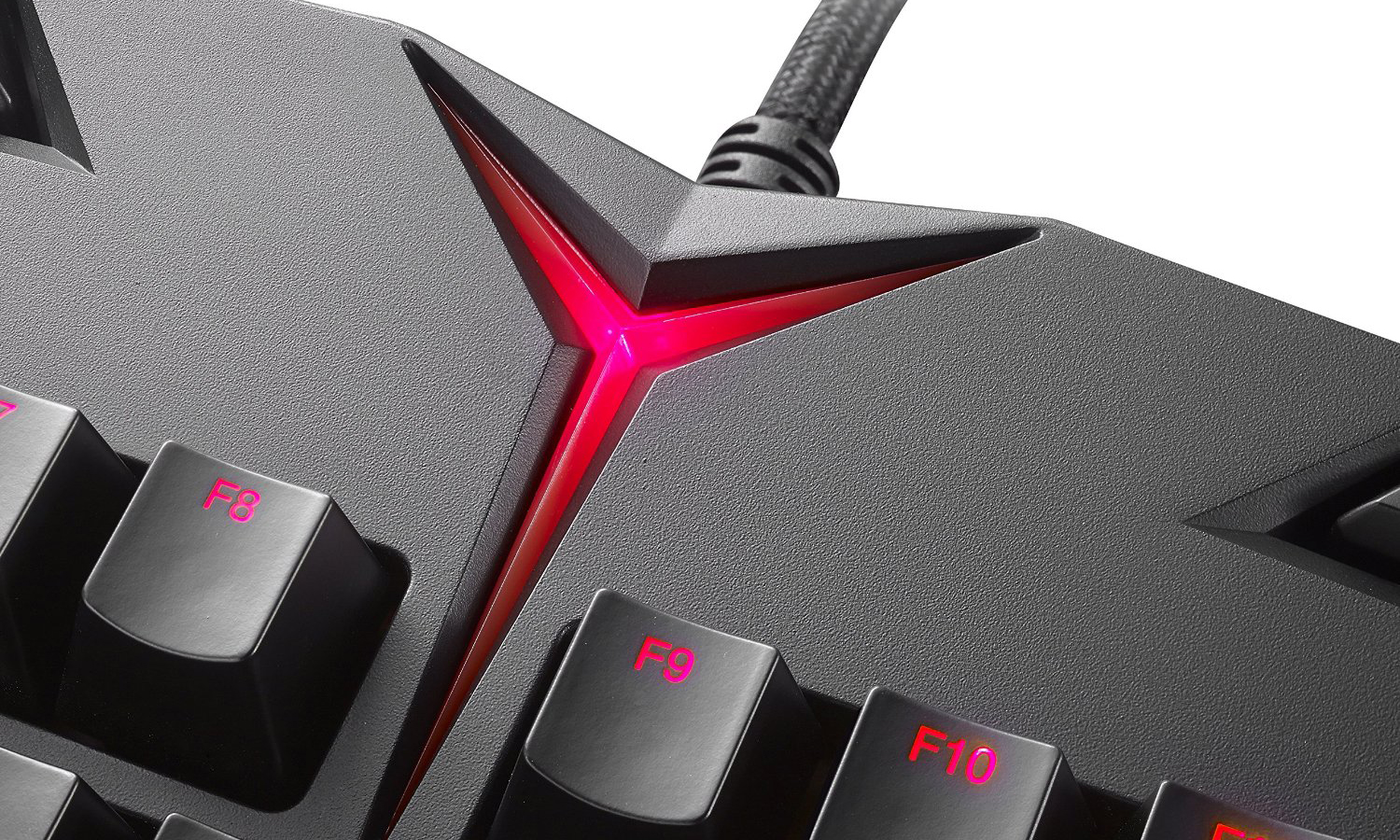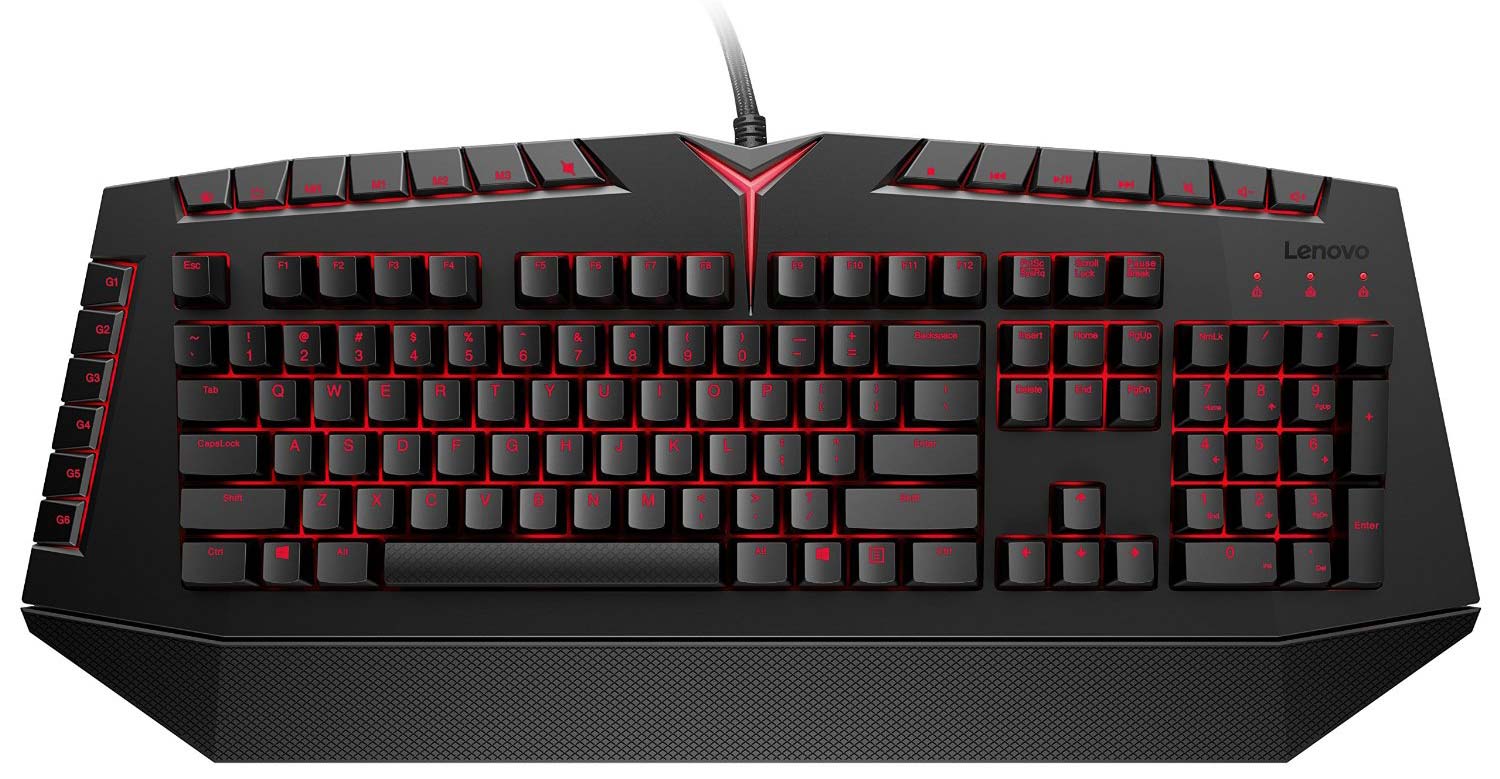Tom's Guide Verdict
The Lenovo Y Gaming Keyboard sports decent keys and good macro features, but it's dragged down by pointless lighting, limited software and an obnoxious design.
Pros
- +
Excellent macro recording
- +
Decent keys
Cons
- -
Large, obnoxious design
- -
Limited software
- -
Less robust than similarly priced keyboards
Why you can trust Tom's Guide
With so many PC gaming peripherals on the market, a manufacturer has only two viable options: Be excellent, or be cheap. The Lenovo Y Mechanical Gaming Keyboard ($120) is neither, and while this is hardly the worst accessory out there, it's tough to think of a compelling reason to pick one up. Good-enough mechanical keys and surprisingly decent macro features boost the keyboard, but pointless lighting options, limited software and a misguided design drag it right back down again. As a pack-in keyboard, the Lenovo Y is good enough; as a stand-alone accessory, it's not worth it.
Design
Not every keyboard has to play by the rules, but if you're going to break them, break them for a reason. The Lenovo Y features a bizarre triangular design that wastes a lot of space. Not only is the keyboard unattractive and liable to take up a lot of room on your desk, but it also fails to use the design for anything innovative. All the buttons are in the usual spots, and the wrist rest is optional.

At 20.8 x 1.5 x 7.5 inches, the keyboard is much bigger than standard full-size competitors from Corsair, Razer and Logitech, which tend toward 17- or 18-inch profiles. In keeping with the Lenovo Y's line of gaming gear, all of the keys have obnoxious red backlights. If the rest of your gaming setup is red, great; if not, it's probably better to just turn these lights off. As much as I like red, it's not the most neutral color to pair with many gaming stations.

To give credit where it's due, though, I liked the Lenovo Y's textured spacebar. For a key that gets used so much, a little pizzazz goes a long way.
MORE: Best Gaming Keyboards
Keys
Mechanical keys are almost always preferable to membrane keys, and that holds true for the Lenovo Y. The system uses Kailh-brand Red switches, which mimic industry-standard Cherry MX keys in a good-enough-for-government-work kind of way. I have no major objection to the Kailh switches, which are quiet and not too resistant. They feel a bit stiffer than authentic Cherry keys, and there are no Brown or Blue options, but these keys are far from the worst imitations out there.

They're also perfectly suitable for typing. When hammering out a selection of "Aesop's Fables" on TypingTest.com, I scored 118 words per minute with seven errors on a Logitech G810 Orion Spectrum, versus 117 words per minute with eight errors on the Lenovo Y. This is a negligible difference, especially since I'd used the Lenovo Y for a few hours and the Logitech for months.
The Lenovo Y features a bizarre triangular design that wastes a lot of space
The Lenovo Y sports a generous assortment of extra keys as well. There are discrete media controls on the upper right, although these are just standard squares rather than the innovative circles and rockers that Corsair and Logitech use. The upper left features a button for recording macros, as well as three different profiles you can switch among at will, labeled M1 through M3. On the far left, there are six buttons for macros, or whatever else you care to program there.
Features
Far and away, the Lenovo Y's best feature is its ability to record macros on the fly. Doing so is extremely easy: Just hit the record button, assign a macro button, record your sequence and tap the macro button once again. This makes it extremely easy to program macros during actual game play without having to rely on arcane button combinations or intrusive software. Some Logitech and Corsair keyboards offer this functionality as well, but it's not a universal trait.

Beyond that, there's not much of interest in this peripheral. You can download software for the Lenovo Y, but all it does is let you edit macros or re-assign the macro keys, as well as adjust the lighting on the Y symbol in the middle of the keyboard. (Basically, it can pulse or not pulse — take your pick.) You can't sync up with other Lenovo Y peripherals, re-assign keys, or link profiles with individual games or lighting options.
Performance
At the very least, the Lenovo Y delivers for gaming. I tested the keyboard with Star Wars: Battlefront, StarCraft II: Legacy of the Void, Rise of the Tomb Raider and Star Wars: The Old Republic, and it performed well across the board, largely due to its decent mechanical switches.
MORE: How to Buy a Gaming Keyboard
Far and away, the Lenovo Y's best feature is its ability to record macros on the fly
I had no problem controlling Lara Croft as she explored ancient Syrian tombs, or guiding Protoss warrior Zeratul through a Zerg-infested temple. The keyboard worked particularly well with The Old Republic, since I was able to record macros for my Jedi knight on the fly, letting one button perform complex sequences that once required countless, furious presses to perfect.
Bottom Line
The Lenovo Y is not an irredeemable keyboard by any stretch. It's comfortable for both typing and gaming, and I've encountered much worse macro functionality in much better keyboards. But that doesn't change that it's ugly and extremely limited compared to other keyboards in the same price range. The Logitech Orion G610 ($120) and Corsair Strafe ($100) feature real Cherry MX keys; the Razer BlackWidow ($120) has much more robust software. Almost anything would look more at home on your desk.

If your Lenovo came with the Y as a pack-in, there's no reason to run out and buy something else, unless you need something very specific for eSports, or if the oversize keyboard simply won't fit in your gaming nook. On the other hand, if you're just in the market for a new keyboard and can pick anything you want, you should probably pick something else.
Marshall Honorof is a senior editor for Tom's Guide, overseeing the site's coverage of gaming hardware and software. He comes from a science writing background, having studied paleomammalogy, biological anthropology, and the history of science and technology. After hours, you can find him practicing taekwondo or doing deep dives on classic sci-fi.

